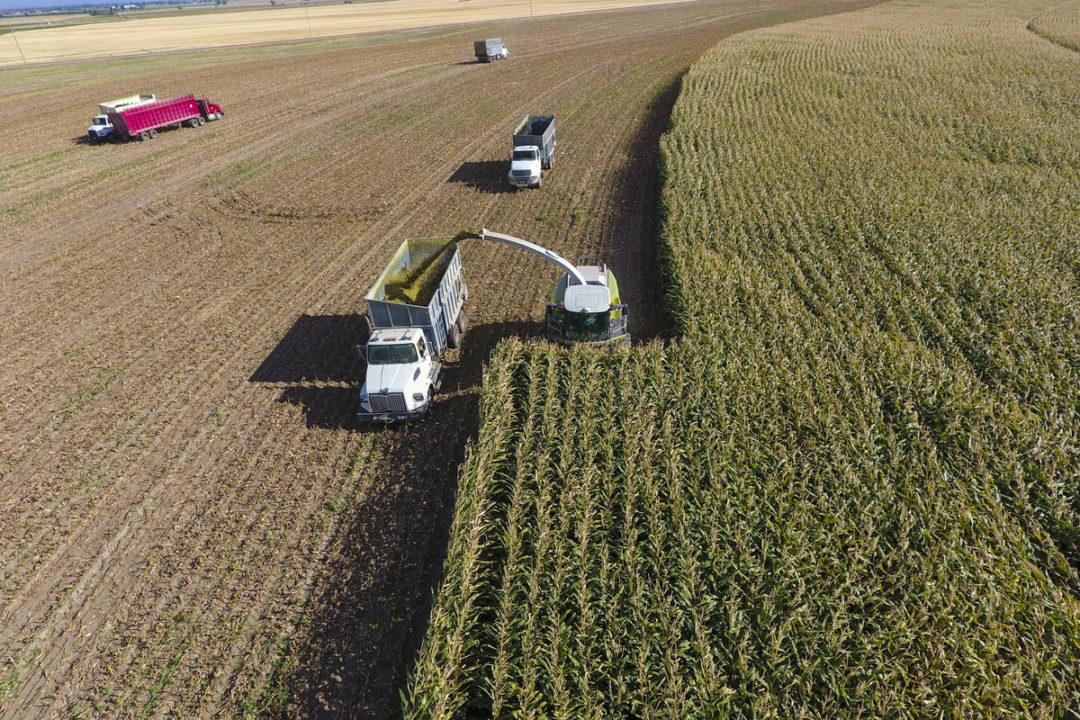It comes as a surprise when some of your herd’s top performers drop off in milk. Nothing has changed regarding cow management, and you verify the diet is still high quality.
A few days later, the rest of your herd starts dropping back in milk. Cows show up with high somatic cell counts, and several are experiencing gastrointestinal distress with increased diarrhea and undigested feed in the manure. Has a pathogen entered your herd or something else?
To cover your bases, you evaluate the feed for mycotoxins, and lo and behold, you find your answer – the ration has a high concentration of aflatoxin.
Aflatoxin is a secondary metabolite produced by certain species of aspergillus molds and is considered one of the most potent naturally occurring carcinogens. While a 2021 mycotoxin survey found that just 6.25% of corn samples contained detectable levels of aflatoxin with an average aflatoxin content of 52 parts per billion (ppb), there was high year-over-year variability in both presence and volume of toxin in samples.
The growth of aflatoxin-producing molds can occur both in the field and in storage. Certain conditions increase the likelihood of mold growth, including hot and dry or warm and wet conditions, lack of feed movement such as during long-term storage and contamination during processing. Because aflatoxin can be produced under a variety of conditions, it is relatively easy for a diet to become contaminated with this dangerous toxin.
The presence of aflatoxins in animal feedstuffs and milk for human consumption is regulated by the FDA with actionable limits set at 20 ppb in dairy feedstuffs and 0.5 ppb in milk. These limits are in place to reduce the negative impacts of aflatoxins on humans consuming cow’s milk.
Beyond the risk to human health, aflatoxins are also of concern to cow productivity and health. The extent to which the cow suffers because of aflatoxin consumption will be determined by the level of aflatoxin consumed, the duration of consumption and the presence of other toxins in the diet.
Upon ingestion, aflatoxin negatively affects rumen microbes by reducing their growth and metabolic activity. It is then absorbed across the rumen and gut wall, where it damages the gut lining and paves the way for opportunistic pathogens to invade the cow’s system. Absorption of aflatoxin leads to immunosuppression and liver damage. Finally, after consuming aflatoxin for a few days or weeks, cow health and performance begin to suffer. Milk production decreases, the cow’s risk for metabolic disease increases and viral and bacterial pathogens attack the weakened immune system. When other mycotoxins are present in the diet, even at low levels, these negative effects are further amplified.
Aflatoxin molds can come in a variety of colors including white, yellow, green and blue. However, the presence of mold is not an indicator of aflatoxin, nor does a lack of mold indicate feed is toxin-free. Therefore, it is important to test feed for aflatoxin. Because the level of aflatoxin in the diet necessary to cause problems is very low, with 20 ppb being equivalent to one kernel of corn in 15 tons of corn, normal feed sampling procedures should be modified to better identify the presence of aflatoxin.
The best way to increase the chance of correctly identifying aflatoxin in feed is to take more grab samples of the ingredient. If you would typically collect five grab samples, multiply that by five and collect 25 grab samples. Additionally, if feed is near water, sits for extended periods of time or is exposed to other less-than-ideal storage conditions, grab samples should be collected from those locations. Once grab samples have been collected for an ingredient, they can be mixed together and a subsample can be sent to the lab for analysis.
Mycotoxin testing should be done on a regular basis as part of a farm’s standard operating procedures. Before feeding out an ingredient, individual ingredient loads should be tested for aflatoxin. And again, because aflatoxin can form during feed storage, any feeds that are stored for extended periods of time should undergo regular sampling.
If aflatoxin is found in the diet at levels that may be harmful (greater than 20 ppb), various steps can be taken to minimize the negative effects on the cow. First, producers should work with their nutritionists to increase the nutrient content of the diet to account for mycotoxin-related nutrient losses in the feed. Second, the ingredient in the diet may be diluted down so that the overall aflatoxin content of the complete diet is less than 20 ppb. However, if the feed is visibly moldy or contains one or multiple toxins at appreciable amounts, its use should be severely restricted or discontinued.
Aluminosilicates may also be a useful tool in minimizing negative effects of aflatoxin on the cow. Aluminosilicates encompass a broad spectrum of clays and zeolites that bind mycotoxins in the rumen, preventing their toxicity. Clays and zeolites have unique chemical and physical structures which affect their affinity and capacity to bind mycotoxins. Care should be taken to select a product with binding capabilities for the mycotoxins of concern. In addition, there are data suggesting yeast cell wall products and certain probiotic strains may also help detoxify aflatoxin in the cow.











